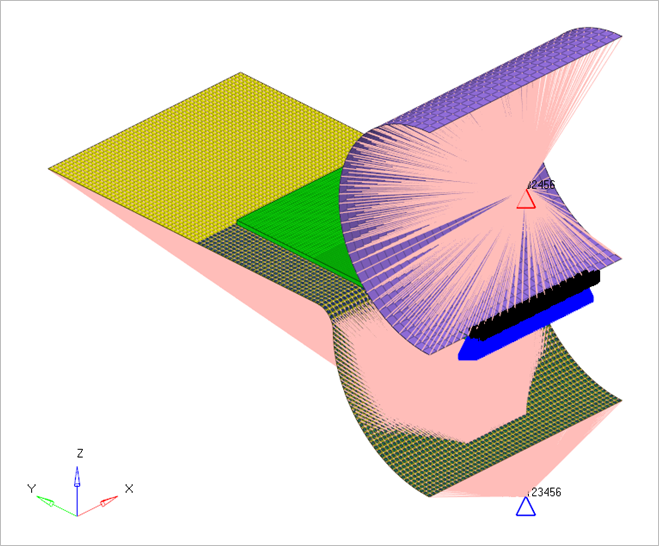OS-V: 0250 3D Sheet Metal Forming
Contacts Benchmark 3 For quasi-static analysis using elastic plastic material, geometric non-linearity and nonlinear boundary conditions.

Model Files
Benchmark Model
Hexa8 elements are used to create the half model of the sheet and Quad4 elements are used to model the punch and the die. The punch radius is 23.5 mm, the die radius is 25 mm, the die shoulder radius is 4 mm, width of the tool is 50 mm, length of sheet is 120 mm, sheet thickness is 1 mm and the width of the sheet is 30 mm. The punch stroke is 28.5 mm. The bottom surface is fixed. Two different contact properties are used, one with coefficient of friction 0.0 and the second with coefficient of friction 0.1342. For the contacts between the punch and the sheet, punch is considered as main surface and the sheet as secondary and for the contacts between the die and the sheet die is considered as main and sheet as secondary.
- Material Properties
- Value
- E
- 70.5 kN/mm2
- 0.342
- 0 (Initial yield stress)
- 194 N/mm2
- Hollomon hardening
- =K x n
Nonlinear Static Analysis Results
| Frictional Coefficient=0 | NAFEMS | OptiStruct Results | Normalized |
|---|---|---|---|
| Forming angle | 21.88 | 20.50 | 1.067317 |
| Angle after release | 48.38 | 45.53 | 1.062596 |
| Frictional Coefficient=0.1348 | NAFEMS | OptiStruct Results | Normalized |
|---|---|---|---|
| Forming angle | 21.84 | 22.437 | 0.973392 |
| Angle after release | 54.45 | 43.22 | 1.259833 |
Reference
NAFEMS R0094 - Advanced finite element contact benchmarks, Konter 2006